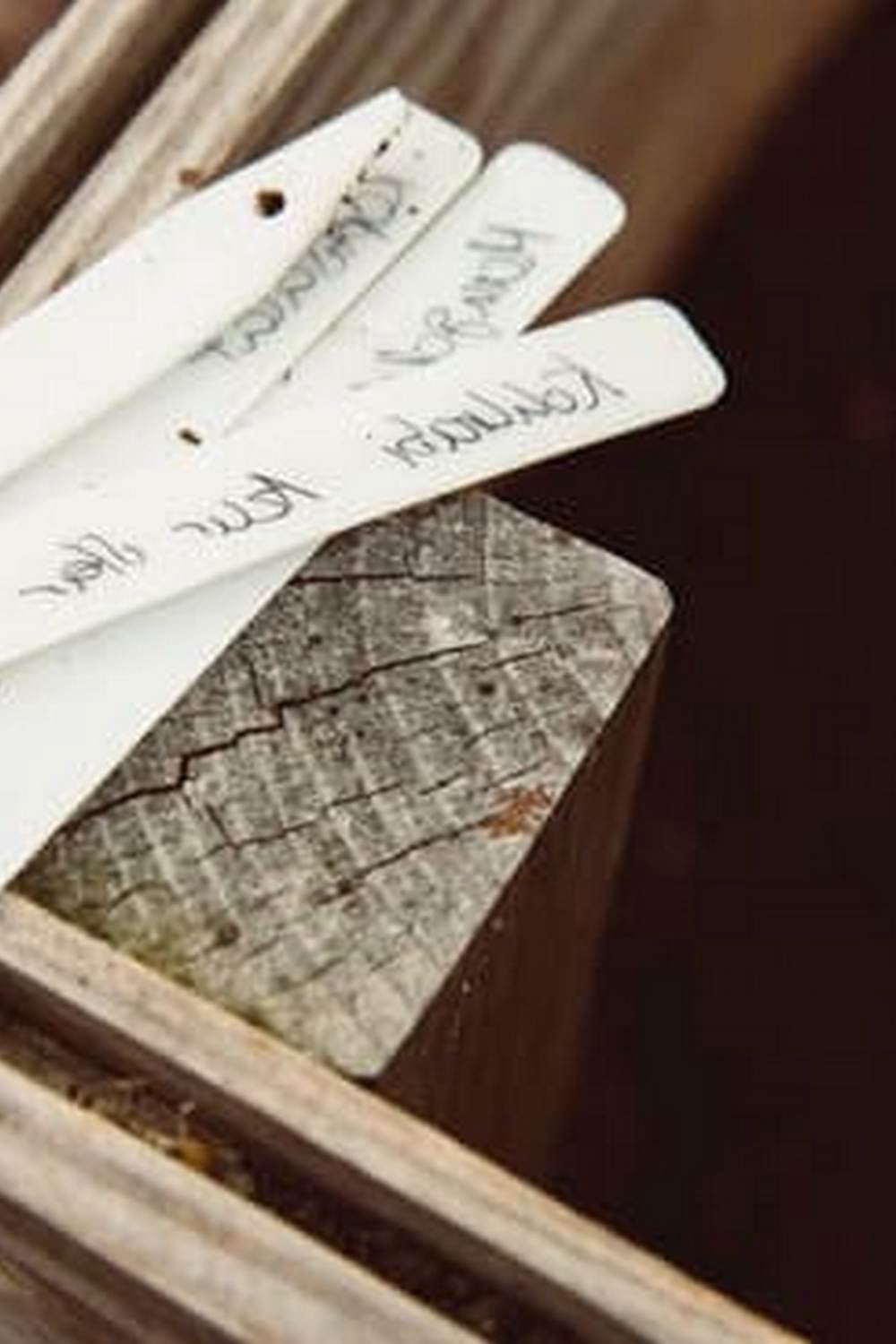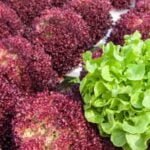Straw mulch for vegetable gardens is a popular and effective method of enhancing the health and productivity of your crops. By introducing this organic material to your garden, you can create a nourishing environment that promotes growth and protects against common challenges such as weeds and moisture loss.
In this article, we will explore the benefits of using straw mulch in vegetable gardens, how to properly apply it, the types of vegetables that thrive with straw mulch, common mistakes to avoid, tips for maintenance, alternative options, and real-life success stories.
When it comes to cultivating a successful vegetable garden, proper mulching is essential. Straw mulch offers numerous advantages such as weed suppression, moisture retention, temperature regulation, and soil enhancement. These benefits contribute to healthier plants and improved yields. Understanding the methods for effectively utilizing straw mulch in your garden will not only save time but also lead to a more bountiful harvest.
In the following sections, we will delve into the specific benefits of using straw mulch in vegetable gardens. We will also provide valuable insights on how to properly apply straw mulch to maximize its impact on your crops.
Additionally, we will discuss the types of vegetables that are particularly well-suited for thriving alongside this natural farming method. Whether you are new to gardening or looking for ways to improve your current practices, incorporating straw mulch can make a significant difference in the health and productivity of your vegetable garden.
Benefits of Using Straw Mulch in Vegetable Gardens
Using straw mulch in vegetable gardens offers a myriad of benefits, making it a popular choice among gardeners. Below are some of the key advantages of using straw mulch for vegetable gardens:
1. Retains Moisture: Straw mulch helps to retain moisture in the soil by acting as a protective barrier against evaporation. This is especially beneficial during hot and dry weather conditions, as it helps to ensure that the plants have a constant water supply.
2. Weed Suppression: One of the biggest challenges in maintaining a vegetable garden is keeping weeds at bay. By applying a layer of straw mulch, gardeners can effectively suppress weed growth, reducing the need for regular weeding and minimizing competition for nutrients among the vegetables.
3. Soil Protection: Another benefit of using straw mulch is that it helps to protect the soil from erosion caused by heavy rain or wind. The layer of mulch acts as a shield, preventing the topsoil from being washed away and helping to maintain soil structure and fertility.
4. Temperature Regulation: During extreme temperatures, such as intense heat or cold, straw mulch acts as an insulator for the soil, helping to regulate its temperature and protect delicate root systems from damage.
5. Organic Matter Addition: As straw mulch breaks down over time, it adds organic matter to the soil, enriching its nutrient content and improving overall soil health.
When utilized properly, straw mulch can significantly enhance the productivity and overall health of vegetable gardens while reducing maintenance requirements.
How to Properly Apply Straw Mulch in Vegetable Gardens
When it comes to using straw mulch for vegetable gardens, proper application is key to reaping the benefits. The first step is to ensure that the soil is well-watered before applying the straw mulch.
This will help the mulch retain moisture and create a more conducive environment for plant growth. Once the soil is properly hydrated, spread a layer of straw mulch around the base of the plants, making sure not to pile it up against the stems as this can promote rot.
It’s important to apply a thick enough layer of straw mulch to provide adequate insulation and weed suppression, typically around 3-6 inches deep. However, be careful not to over-mulch as this can lead to excessive moisture retention and potentially harm the plants. Finally, regularly check and replenish the straw mulch as needed, especially after heavy rain or strong winds which may cause displacement.
In addition to proper application techniques, choosing high-quality straw mulch is essential for its effectiveness in vegetable gardens. Look for organic straw free from herbicides or pesticides that could potentially harm your plants and soil health.
| Benefits of Properly Applying Straw Mulch | How-to Tips |
|---|---|
| Ensures adequate moisture retention and weed suppression | Ensure soil hydration before application |
| Provides insulation for plant roots | Avoid piling up against plant stems |
| Promotes a healthy environment for plant growth | Regularly check and replenish when needed |
Types of Vegetables That Thrive With Straw Mulch
When it comes to using straw mulch in vegetable gardens, there are certain types of vegetables that not only benefit from the use of straw mulch but thrive with it. The natural properties of straw mulch make it an ideal choice for specific vegetables, and understanding which ones will thrive with this type of mulch can contribute to a successful harvest.
Cucumbers and Squash
Both cucumbers and squash are known to thrive with straw mulch. The layer of straw helps retain moisture in the soil, which is particularly beneficial for these water-loving plants. Straw mulch also helps prevent weeds from growing around these plants, reducing competition for nutrients and ensuring healthy growth.
Tomatoes
Tomato plants also do well with straw mulch. The layer of straw helps regulate soil temperature, keeping it cooler in the summer and warmer in the winter. Additionally, using straw mulch around tomato plants can help prevent diseases by reducing soil splashing onto the lower leaves.
Peppers
Pepper plants can greatly benefit from the use of straw mulch as well. Similar to tomatoes, peppers require consistent soil moisture, and the use of straw mulch helps maintain adequate moisture levels while also preventing weed growth that could compete for essential nutrients.
Common Mistakes to Avoid When Using Straw Mulch in Vegetable Gardens
When using straw mulch for vegetable gardens, there are several common mistakes that gardeners should avoid to ensure successful growth and maintenance of their crops. One of the most common mistakes is applying the straw mulch too thickly.
While it’s important to provide a sufficient layer of mulch to suppress weeds and retain moisture, an excessive amount can actually prevent water from reaching the soil and hinder the growth of plants. It is recommended to apply no more than 3-4 inches of straw mulch to avoid this issue.
Another mistake to avoid is not properly preparing the soil before applying the straw mulch. In order for the mulch to be effective, it’s important to weed and cultivate the soil before laying down the straw. This will create a healthy environment for your vegetables to grow and allow the mulch to do its job without competing with unwanted plants.
Additionally, some gardeners make the mistake of using weed-infested or moldy straw as mulch. It’s crucial to use clean, weed-free straw to prevent introducing new pests or diseases into your vegetable garden. Checking for any signs of mold or unwanted seeds in the straw before application is also recommended.
Overall, being mindful of these common mistakes will help ensure that using straw mulch in vegetable gardens is a beneficial practice rather than a hindrance to plant growth and health. By following proper application techniques and quality control measures, gardeners can experience all the advantages that straw mulch has to offer for their vegetable crops.
Tips for Maintaining Straw Mulch in Vegetable Gardens
Maintaining straw mulch in vegetable gardens is crucial for ensuring its effectiveness in providing benefits to your plants. Proper maintenance can help extend the life of the mulch and prevent any potential issues that may arise from neglect. Here are some tips for maintaining straw mulch in vegetable gardens:
Regular Inspection and Fluffing
One key aspect of maintaining straw mulch is to regularly inspect it for any signs of compaction, mold, or pests. By regularly fluffing the straw mulch, you can ensure that the soil underneath receives proper aeration and moisture. This also helps to prevent the formation of a crust over the soil surface, which can inhibit water penetration.
Watering Considerations
When using straw mulch for vegetable gardens, it’s important to adjust your watering practices accordingly. While straw mulch helps retain moisture in the soil, it’s essential to monitor soil moisture levels and adjust your watering schedule as needed. Avoid overwatering, as this can lead to excessive moisture retention and potential fungal issues.
Replacing Mulch as Needed
Over time, straw mulch will naturally break down and decompose. It’s important to periodically assess the condition of the mulch and replace it as needed to maintain its effectiveness. Replacing old mulch with fresh straw ensures that your vegetable garden continues to receive the full benefits of using straw mulch.
By implementing these maintenance tips, you can ensure that your straw mulch remains effective in providing insulation, moisture retention, weed suppression, and overall health benefits for your vegetable garden. Taking care of your straw mulch will ultimately contribute to the success of your vegetable crops throughout the growing season.
Alternative Mulch Options for Vegetable Gardens
While straw mulch is a popular and effective option for vegetable gardens, there are also alternative mulch options that can provide similar benefits. Here are some alternative mulch options to consider for your vegetable garden:
- Unprocessed Wood Chips: Unprocessed wood chips can be an excellent alternative to straw mulch. They decompose slowly, providing long-term weed suppression and moisture retention. Additionally, as they break down, they can enrich the soil with organic matter and nutrients.
- Grass Clippings: Grass clippings are another readily available mulch option for vegetable gardens. When using grass clippings as mulch, it’s essential to ensure that the grass has not been treated with herbicides or pesticides. Grass clippings can help suppress weeds and retain moisture in the soil.
- Cardboard or Newspaper: Cardboard or newspaper can be used as a biodegradable mulch option in vegetable gardens. These materials can effectively smother weeds and help retain moisture in the soil. Simply lay down layers of cardboard or newspaper around your vegetable plants and cover them with a layer of compost or other organic matter.
While these alternative mulch options can provide similar benefits to straw mulch, it’s essential to consider the specific needs of your vegetable garden before choosing a mulching material. Experimenting with different types of mulch can help you determine which option works best for your garden’s unique conditions and the types of vegetables you’re growing.
Real-Life Success Stories of Using Straw Mulch in Vegetable Gardens
In conclusion, the use of straw mulch for vegetable gardens has proven to be highly beneficial for many gardeners. Real-life success stories from experienced gardeners have shown that straw mulch helps to retain moisture, control weeds, regulate soil temperature, and improve overall soil health. By following proper application techniques and avoiding common mistakes, gardeners have been able to maintain thriving vegetable gardens with the use of straw mulch.
Furthermore, the types of vegetables that thrive with straw mulch are diverse and include a wide variety such as tomatoes, peppers, cucumbers, squash, and lettuce. The versatility of straw mulch makes it a valuable option for gardeners looking to improve their vegetable yields while reducing the need for excessive watering and weeding.
Despite its effectiveness, it is important for gardeners to remember that alternative mulch options are available for vegetable gardens. While straw mulch may be a popular choice, materials such as grass clippings, shredded leaves, or compost can also provide similar benefits for vegetable plants. Ultimately, the success stories of using straw mulch in vegetable gardens serve as a testament to its impact on promoting healthy and productive crops.
Frequently Asked Questions
Is Straw Good Mulch for Vegetables?
Straw can be a good mulch for vegetables because it helps retain moisture in the soil, suppresses weeds, and regulates soil temperature. It also decomposes slowly, adding organic matter to the soil.
Is It OK to Put Straw Around Tomato Plants?
Yes, it is okay to put straw around tomato plants as mulch. This can help prevent soil-borne diseases, reduce water evaporation, and keep the fruit clean by preventing contact with the soil.
What Is the Best Mulch for Veggies?
The best mulch for veggies depends on various factors such as climate, soil type, and crop variety. Organic mulches like straw, grass clippings, or compost are popular choices for vegetable gardens due to their ability to improve soil fertility and structure while controlling weeds.

If you’re looking to get into vegetable gardening, or are just looking for some tips on how to make your current garden better, then you’ve come to the right place! My name is Ethel and I have been gardening for years. In this blog, I’m going to share with you some of my best tips on how to create a successful vegetable garden.





